The retail industry is all set to turn upside down in the not-so-distant future, courtesy of fast-paced development in the realm of generative AI. In 2025, it is predicted that the global generative AI market for retail will reach as high as $11.8 billion, with over 25% year-over-year growth.
It's the investments from retail giants like Amazon, Walmart, and Alibaba that make these AI systems inducted into their operations, mainly in a bid to drive sales, enhance efficiency, and provide good customer experience. However, that’s not the case as even small and medium-scale enterprises are using the power of generative AI to bridge the chasm and stand on an even platform with the industry giants.
The possibilities will become literally boundless moving into the future, as generative AI is able to revolutionize the way in which we shop, consume, and generally interact with the retail world. In this article, we’ll explore how generative AI for retail is being used, and how it will revolutionize every aspect of the shopping experience.
How AI is changing the retail industry
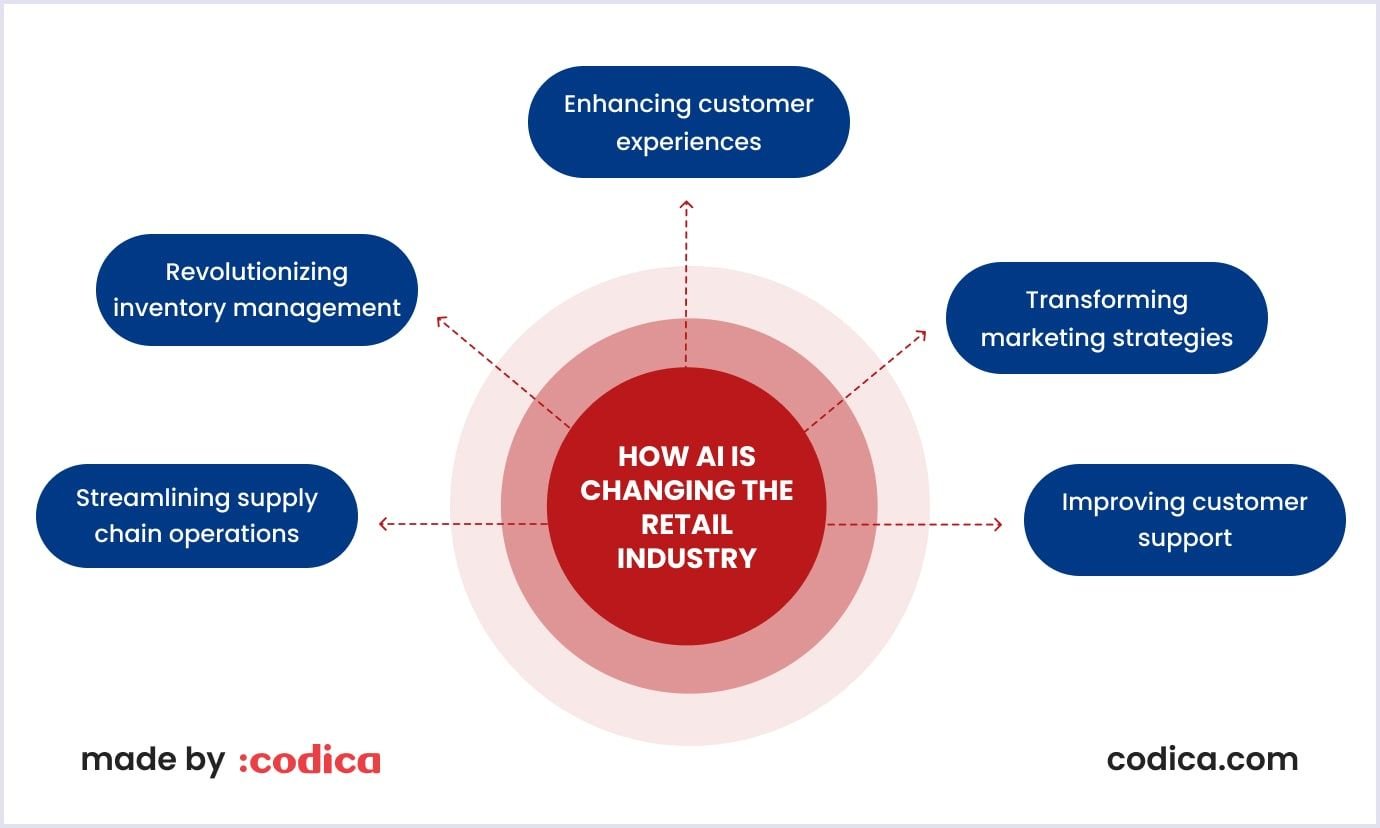
Definition and core principles of generative AI
Generative AI refers to the class of machine learning models that are able to create new, original content. This class is absolutely different from simply analyzing or classifying existing data. Generative AI techniques involve generative adversarial networks and variational auto-encoders that can generate synthetic data samples that look very much like their real-world counterpart data samples.
Key technologies powering generative AI
Some of the key technologies that have enabled the recent advances in generative AI include:
- Generative Adversarial Networks: GANs involve the concept of adversarial training of two neural networks—a generator network, which generates synthetic data, and a discriminator network, which tries to tell the generated data apart from the real one. In this adversarial process of training, the generator network learns to produce outputs that are increasingly realistic and convincing.
- Variational Autoencoders: VAEs are deep generative models that learn continuous, probabilistic latent representations of the input. A main property in VAEs is that they exert a very strong effect on the style, meaning they encode data with closely related styles into very proximal regions in the latent space, and those distantly related far from each other.
These are just a few examples of the key techniques on the basis of which the surging pace of advances in generative AI capabilities over recent years has been spurred. The field develops at a very fast pace, and with new architectures and learning schemes, the horizon of what becomes feasible moves further.
Read also: Multimodal Generative AI: A Comprehensive Overview
Differences between generative AI and traditional AI
While traditional AI systems often focus on tasks such as classification, prediction, and decision-making, generative AI models are uniquely armed with the ability to create new content. This change in competencies opens a whole world of possibilities to retailers for creating personalized designs of products, simulating customer behavior, and even generating marketing content.
| Characteristic | Generative AI | Traditional AI |
|---|---|---|
| Purpose | Create new, original content. | Analyze data and make decisions. |
| Approach | Learn patterns in data to generate new content. | Use pre-programmed rules and algorithms. |
| Creativity | Inherently creative, can generate unique ideas. | Limited to producing content based on existing patterns. |
| Flexibility | Highly adaptable to different tasks and domains. | Often designed for specific applications. |
| Explainability | Can be more challenging to understand. | Typically more transparent decision-making. |
| Data Needs | Requires large, diverse datasets. | Can work with smaller datasets, but performance may be limited. |
| Applications | Content creation, personalization, novel idea generation. | Classification, prediction, optimization, decision support. |
Enhancing customer experiences
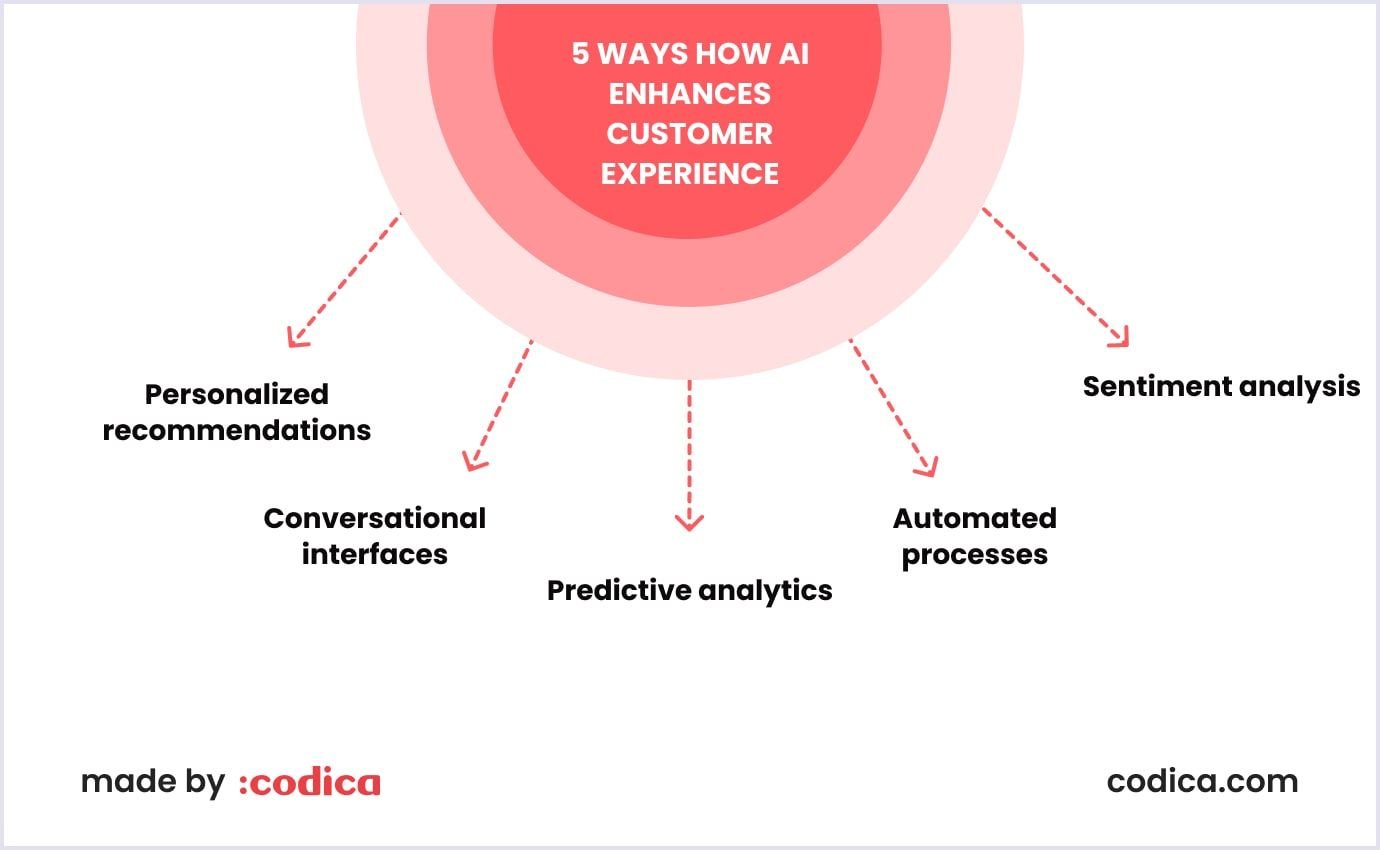
Personalized shopping experiences through AI
Generative AI is playing a leading role in turning retailers' ability to offer very high degrees of personalization in the shopping experience for customers. In using large datasets that contain information about customer preferences, buying behavior, and browsing history, AI models are in a position to dynamically generate individually tailored content, product recommendations, and shopping experiences. This personalization on such a level raises customer engagement, loyalty, and sales.
AI-driven product recommendations and customization
AI-based sophisticated recommendation engines make assessments of customers' browsing history, purchase data, and other contextual information in order to dynamically generate a list of recommended products and uniquely developed offerings. For example, language models that understand the preference and style of a customer can use generative models to visualize how different product variations or customization options would look, letting a customer see how they will really look before deciding to make a purchase.

Virtual fitting rooms and try-on experiences
Retailers use generative AI to provide an immersive virtual try-on experience of their goods. While combining computer vision, 3D modeling, and GANs, AI systems now have the ability to superimpose rather realistic images of products onto a customer's picture or avatar, from clothes to accessories and beauty products. With such applications, customers can visualize how the products would look on them before making purchases.
Optimizing inventory management
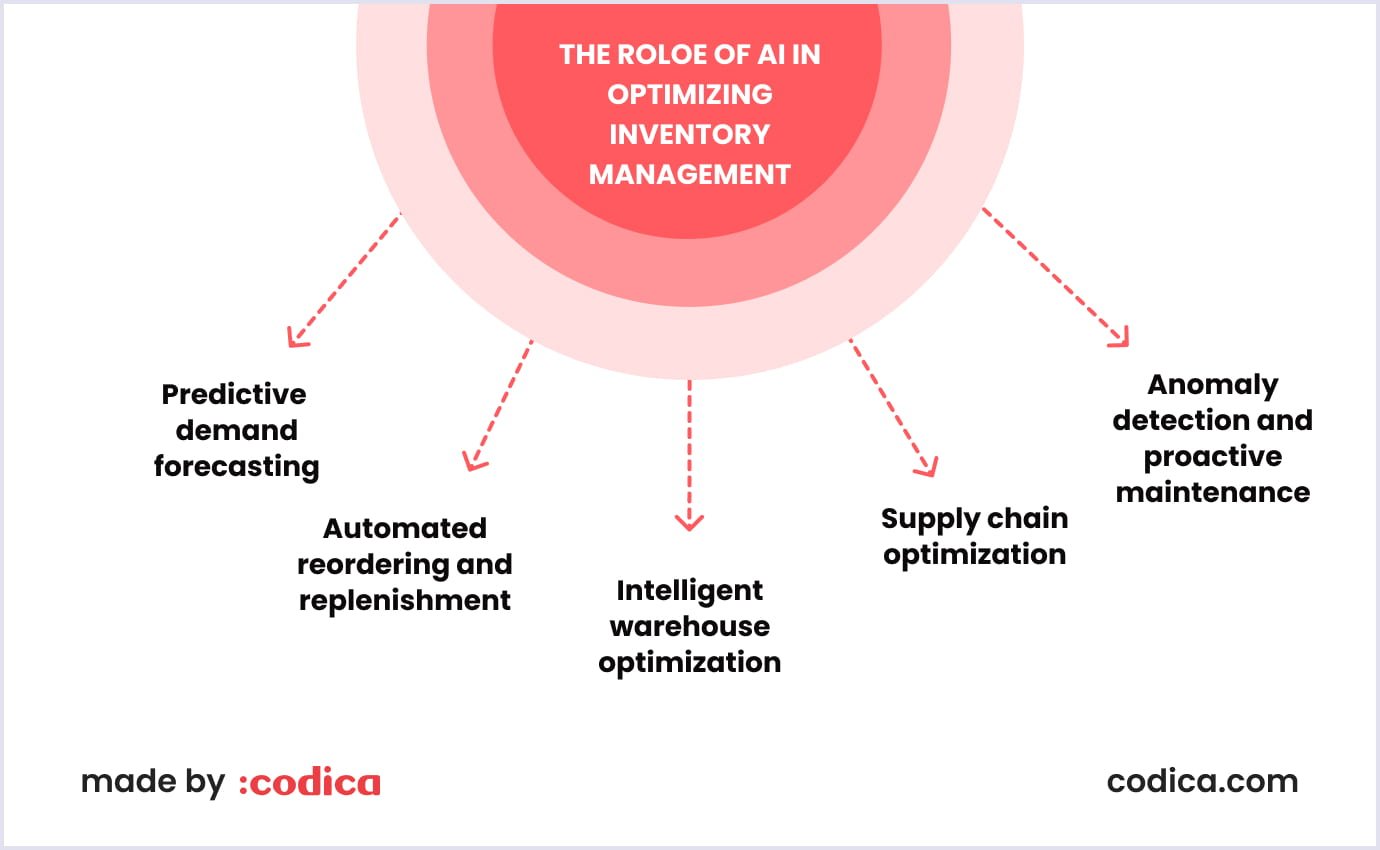
Predictive analytics for inventory optimization
Generative AI models can digest vast reams of data to recognize sales trends, customer tastes, and market movements with a view to making smart forecasts of demand in the future. An upper hand in this respect gives retailers great scope to fine-tune the levels of inventory so that they are holding the right products at the right levels of inventory at the right time. Armed with such AI-driven insights, businesses would be better placed to ward off stockouts and reduce wastage—all while pumping up customer satisfaction. However, one should not forget that the technology should supplement, not replace, human intuition and the capability of decision-making in a fast-changing retail world.
AI-driven demand forecasting
Generative AI algorithms can question large, complex datasets—like historical sales, weather patterns, and economic indicators—quickly to derive highly accurate demand forecasts. This way, retailers will have a better place to understand the fluctuations that occur in consumer demand and plan their inventory accordingly in order to meet the needs of their customers effectively. In that respect, businesses are in a better position to avoid high overstock situations by maintaining a lean, efficient inventory management system.
Reducing waste and improving stock availability
Generative AI for retail companies applied in inventory optimization and demand forecasting empowers retailers to reduce overall waste while increasing the availability of stock. Businesses will now be able to minimize unsold or expired products, thereby cutting down on waste and paving the way toward greater sustainability in inventory handling. But the human element is still needed to understand the values and expectations of the local community and the larger social environment, and to ensure that the efforts of the business are aligned with them.
Streamlining supply chain operations
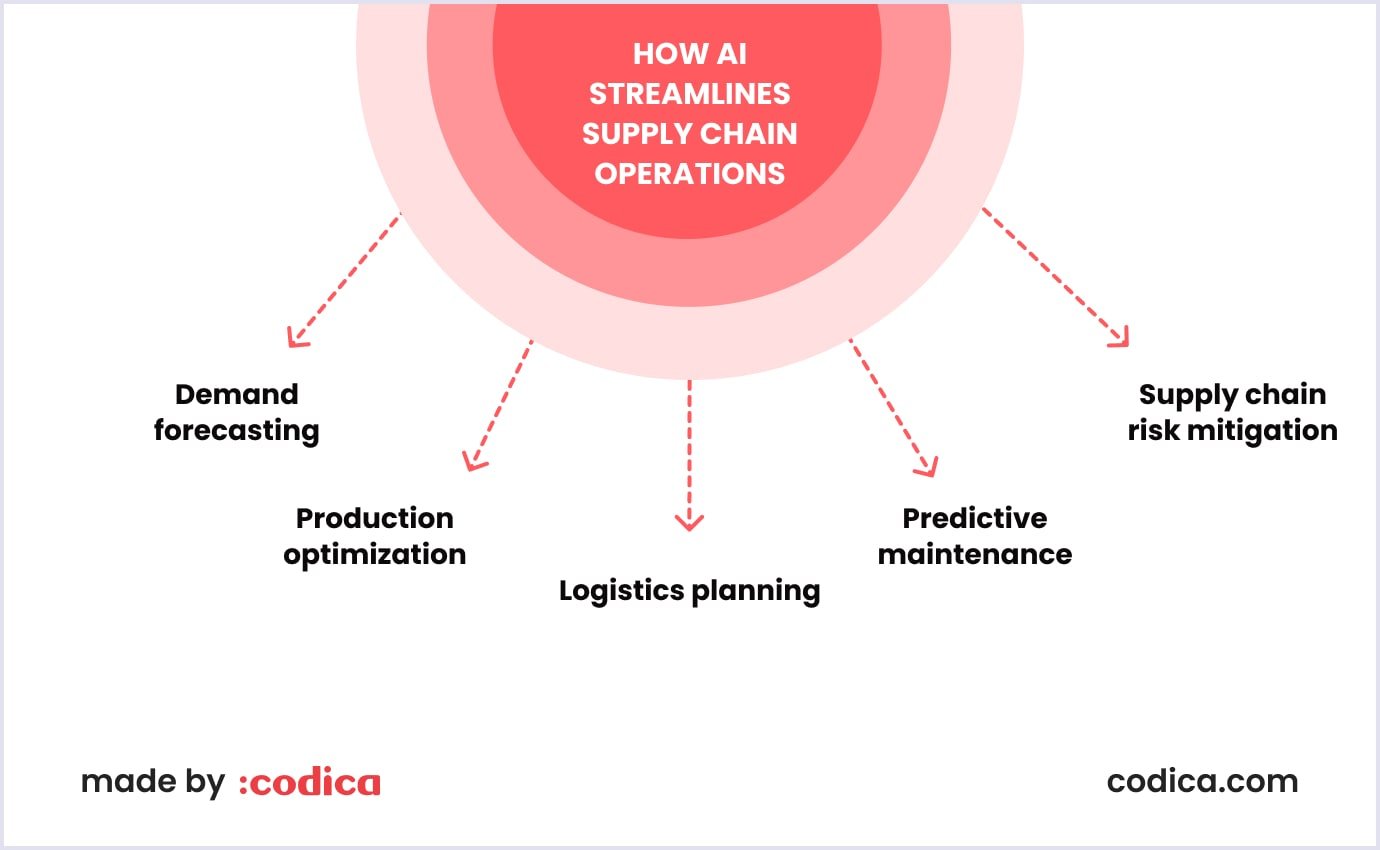
AI-powered logistics and supply chain management
Generative AI algorithms will power a range of innovations in areas such as route optimization and warehouse management within the supply chain. With real-time information provided on inventory levels, shipment status, and the transportation network itself, AI systems will be able to identify numerous opportunities for efficiency improvements and make relevant decisions toward improving overall supply chain performance. Yet, it is the human touch that always counts significantly in fine-tuning these very systems to regional, cultural, and business environments.
Enhancing efficiency and reducing costs
Integrating generative AI into supply chain operations can yield significant cost savings and efficiency gains. AI-based logistics and supply chain management systems can optimize transportation routes, foresee and inhibit delays, and automate repetitive tasks, which aids in bringing down operational costs and raising more profit. However, humans are needed to ensure that such efficiency improvements do not occur at the expense of employees' welfare, ethics, and long-term business sustainability.
Real-time tracking and predictive maintenance
Generative AI for retail companies can also be used in the real-time monitoring of supply chain assets, such as vehicles, warehouses, and equipment, and execute predictive maintenance. Business enterprises will only need to act on the problem before it disrupts the supply chain and minimizes downtown to guarantee a seamless flow of goods by continuously monitoring performance data for the prediction of possible problems.
Yet, the human touch remains necessary in interpreting those insights and making strategic decisions for a culture of proactive maintenance and continuous improvement.
Transforming marketing strategies
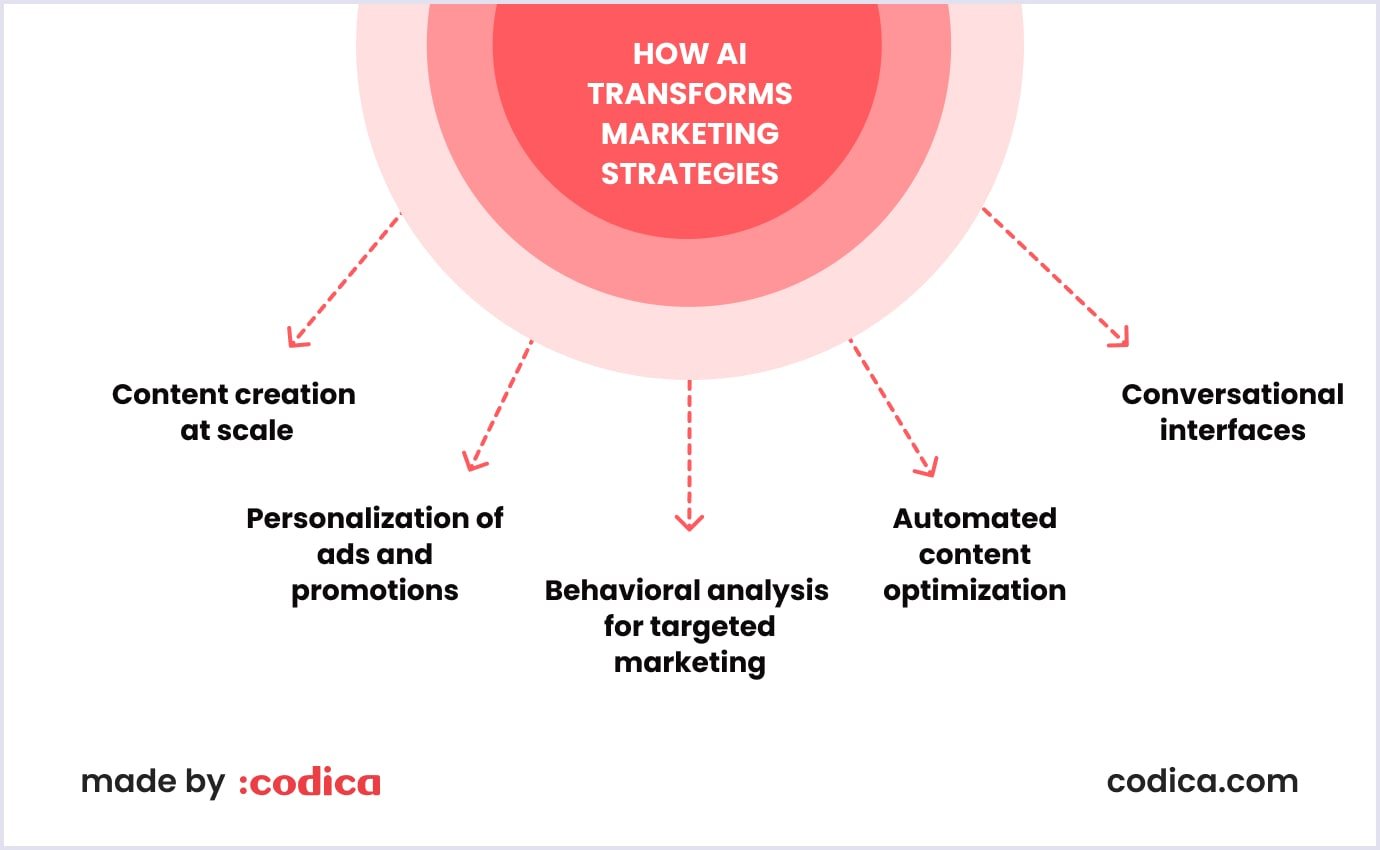
AI-generated content for marketing campaigns
Generative AI for retail companies can change how these businesses produce and curate marketing content. There are advanced algorithms that can generate personally relevant, engaging content on a par with product descriptions, social media posts, video scripts, or any other creative assets one may imagine. This will allow retailers to scale their output much more, tailor messages across different segments, and ensure consistency of branding across touchpoints by mechanizing their content creation process.
Personalization of advertisements and promotions
With generative AI, retailers can give customers fully personalized ad experiences, offers, and recommendations. The customer data with respect to their browsing history, purchase patterns, and personal preferences can be used to drive a personalized promotional activity. Not only is it rather satisfying from a customer experience perspective, but it also has huge ramifications for marketing campaigns in terms of engagement, conversion rates, and customer loyalty.
Analyzing customer behavior for targeted marketing
AI generative models can provide an enormous depth of insight into customer behavior, from transaction data to click-stream data, in-store purchases, and social media activity. From this AI-driven analytics, a business can get hidden patterns and trends that will allow them to segment their customers, understand which audiences are most valuable, and develop much more tightly focused marketing initiatives.
Read also: The Role of Generative AI in Marketplace Development
Improving customer support
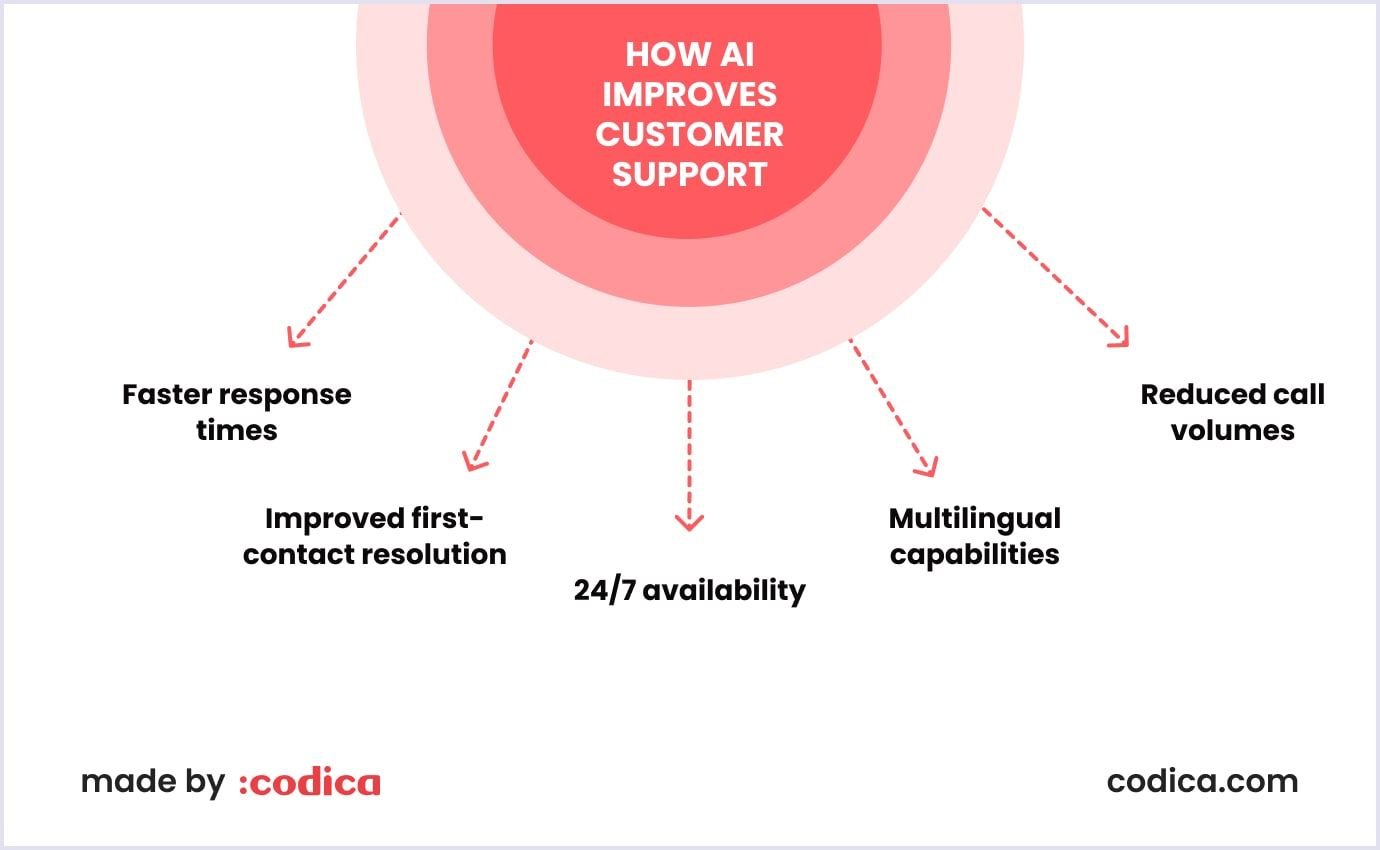
AI chatbots and virtual assistants
Powered by natural language processing and machine learning, the understanding of customer queries by AI-powered chatbots has grown phenomenally in speed and accuracy. Intelligent systems are giving a new face to the landscape of customer support by offering real-time assistance and solutions without all the frustrations that come from endless hold times or inflexible phone menus.
Improving response times and customer satisfaction
Retailers are reporting dramatically improved response times, helped out by AI chatbots; customers receive the help they need in a fraction of the time it would take for a human agent. Besides the fact that these AI systems can provide 24/7 support, easily dealing with complex inquiries and multilingual capabilities that increase customer satisfaction, they are also responsible for reducing call volumes and increasing first-contact resolution rates.
24/7 support and multilingual capabilities
Run-anytime support and the ability to converse in any language, AI-driven chatbots are ensuring customers have a medium for help whenever needed from anywhere. This level of accessibility and responsiveness can prove to be a game-changer for the retailer in terms of elevating customer experience by building further brand loyalty in an ever-competitive environment.
Case studies of generative AI for retail
Successful implementation examples from leading retailers
Renowned retail giants have been at the forefront of adopting generative AI development services to transform their operations and drive business growth. Some notable generative AI for retail examples include:
- Amazon's AI-powered "Customers who bought this item also bought" recommendations - driving billions in additional sales annually;
- Walmart's use of generative AI to predict demand and optimize inventory, leading to a 15% reduction in out-of-stock items;
- Sephora's AI-powered virtual try-on and beauty tutorial features have resulted in an impressive 11% increase in average basket sizes, showcasing the effectiveness of their data-driven approach to enhancing the customer experience and driving sales;
- Stitch Fix's algorithm-driven personal styling service, leveraging AI to handpick clothing items for each customer.
Lessons learned from real-world applications
While the potential of generative AI is immense, retailers have also encountered several challenges in implementing these intelligent systems. Key lessons learned include:
- Importance of a robust, clean data foundation to train generative AI models effectively;
- Challenges in integrating AI systems with legacy IT infrastructure and workflows;
- Need for change management to upskill customer service teams on AI-powered tools;
- Balancing the benefits of automation with maintaining a human touch in customer interactions;
- Vigilance required around ethical AI practices and data privacy regulations.
Impact on business growth and customer engagement
The transformative impact of generative AI on the retail industry is undeniable, with leading retailers reporting significant improvements across various business metrics.
Some of the average key impacts include:
- 20% increase in sales conversions for retailers using AI-powered product recommendations;
- 30% reduction in customer service costs through AI-enabled chatbots and virtual agents;
- 25% improvement in first-call resolution rates, enhancing customerя satisfaction;
- Deeper customer insights and personalization leading to 15% higher customer lifetime value;
- AI-powered inventory optimization driving 12% reduction in product returns for some retailers.
Conclusion
Generative AI is no longer a futuristic concept - it is shaping the present-day reality of the retail industry. This transformative technology has the power to personalize customer experiences, streamline internal processes, and drive innovation in product development. Businesses that embrace the potential of generative AI can unlock a competitive edge and deliver a new era of retail experiences for their customers.
Codica offers specialized AI development services to help retail companies leverage generative AI and transform their operations. By partnering with us, you can create a more personalized and engaging shopping journey for your customers. Additionally, you can optimize your internal workflows for increased efficiency and profitability.
Don't miss this opportunity to stay ahead of the curve and bring the future of AI in retail to your customers. Contact us today to discuss how generative AI can boost your business.
